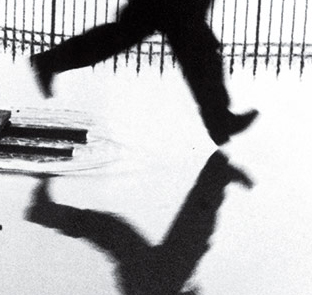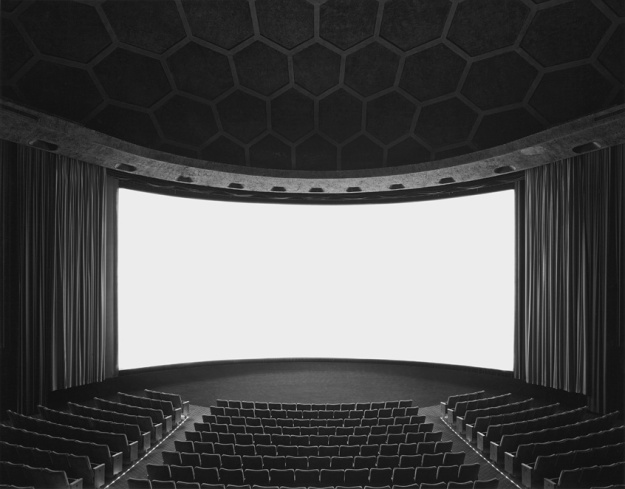The pivotal point on Henri Cartier-Bresson’s Behind the Gare image (fig 1), is undoubtedly the jumping man’s leading leg, which is just about to connect with the water.

Fig 1
More specifically, the space between the man’s foot and its reflection. Part of the perfection of this image is the mere slither of light that separates man from shadow. The timing literally couldn’t have been better had he tried.

Fig 2
We can see where the man has jumped from and to, and of course we understand what the outcome will be. We don’t know how deep the water is, we are just witness to his attempt to travel as far as possible before the inevitable happens. The next moment depends entirely upon your imagination.
The contrast between the black of the silhouette and the white of the reflected sky allows this section to speak rather loudly. It doesn’t matter that there is no detail captured within the man’s form, it’s irrelevant. It only really matters that we know he is about to disturb the otherwise tranquil water, and effectively sustain a rather soggy foot.
The short story is there for all to see, captured in a fraction of a moment. When you compare this to any of Sugimoto’s Theatre imagery (fig 3), which are exposed over the duration of a film screening, you would assume that you would see something of a story within the picture, yet we don’t. The opposite is true, we see a static image, full of architectural detail, but no corresponding narrative.

Fig 3
This suggests that time bears no relevance in the art of story telling within the medium of photography.
Word Count: 275
Image Reference:
Fig 1 + 2: Henri Cartier-Bresson, (1932), Place de l’Europe. Gare Saint Lazare. [ONLINE]. Available at: http://pro.magnumphotos.com/Asset/-2S5RYDI9CNRQ.html [Accessed 4 December 2017].
Fig 3: Hiroshi Sugimoto, (1993), Cinerama Dome, 1993 [ONLINE]. Available at: https://www.sugimotohiroshi.com/new-page-7/ [Accessed 4 December 2017].